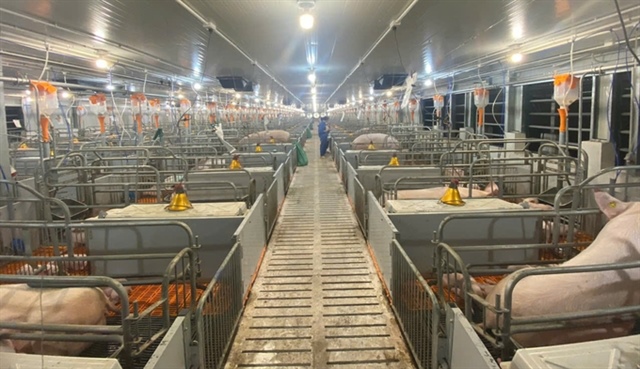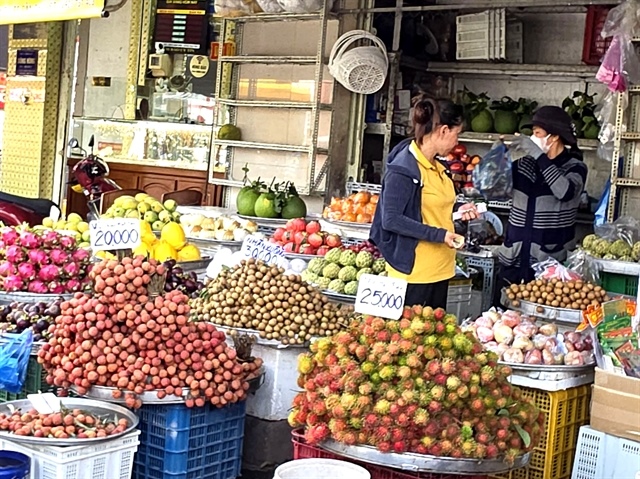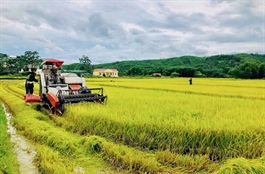S Korea, Japan: Việt Nam's two biggest wood pellets consumers
S Korea, Japan: Việt Nam's two biggest wood pellets consumers
In the first half of this year, Việt Nam exported 1.85 million tonnes of wood pellets to overseas markets, earning a turnover of nearly US$300 million, Viforest said in its latest report.

Wood pellets. — Photo courtesy of Viforest |
South Korea and Japan have become the biggest importers of Vietnamese wood pellets, accounting for over 95 per cent of Việt Nam’s total export of this product, the Association of Vietnam Timber and Forest Product (Viforest) has said.
During the period, Việt Nam exported 0.8 million tonnes of wood pellets to South Korea and is expected to ship 1-1.5 million tonnes to the market by the year-end.
The wood pellets exported to South Korea are primarily made from by-products of the wood processing industry, such as sawdust, wood shavings, and leftover wood scraps. The exporters are mostly in the southeastern region where wood furniture factories are concentrated.
Currently, Việt Nam is South Korea's largest supplier of wood pellets, accounting for 80 per cent of the total demand of the market.
Meanwhile, Việt Nam's exports of wood pellets to Japan reached 0.87 million tonnes over the past six months. The orders received were mostly long-term contracts.
Japan requires pellets from domestically grown timber in forests with sustainable forest management certification (FSC). This source of raw material is mainly available in areas with a high concentration of planted forests in Việt Nam, particularly in the central and northern regions.
The price of wood pellets exported to South Korea in June was only around $110 per tonne while that to Japan ranged from $145-165 per tonne.
Viforest forecast that in the last months of 2023, Việt Nam's wood pellet production and export would not have a remarkable change. The price of pellets exported to South Korea would increase according to the current momentum, but would still be lower than the price at the end of last year.
Meanwhile, the volume and price of Vietnamese wood pellets exported to Japan would be stable, the association predicted.
An expert from Forest Trends, Tô Xuân Phúc, said the demand for pellets in Japan would increase to 20 million tonnes by 2030, of which the amount of wood pellets would account for about 13-15 million tonnes. This would be a great opportunity for Vietnamese enterprises, especially those that had large-scale and well-managed factories.
Each year, Japan uses about eight million tonnes of pellets, of which 40-50 per cent are palm kernel shells, and the rest are wood pellets.
Delivering a long-term market analysis, Phúc said that the world demand for pellets would increase by about 250 per cent in the next decade, reaching 36 million tonnes from 14 million tonnes in 2017.
In the future, Việt Nam's pellet industry would have to face the competition of that from countries in Southeast Asia, especially in Indonesia and Malaysia which are home to many operational pellet factories while many others were under construction, Phúc said.
However, as the world demand for pellets would increase many times in the next decade, Phúc foresees positive prospects for the production and consumption of pellets.
Besides export markets, the wood pellet industry would also enjoy the opportunity to develop in the home tuft when consumption demand in Việt Nam began to show signs of rapid growth thanks to the Government's great efforts to fulfil its commitments to reduce greenhouse gas emissions and use clean energy, including pellets to replace coal in energy production.
The Power Plan VIII, approved by the Government on May 15 this year, also prioritised the development of renewable energy sources, including biomass power, to replace high-emission coal power.
Việt Nam has become the world’s second-biggest manufacturer of wood pellets, only behind the US. From 2013-22, the volume and value of Việt Nam's wood pellet exports increased by 28 and 34 times, respectively.
In 2022 alone, Việt Nam exported 4.88 million tonnes of wood pellets worth $787 million, up 39.35 per cent and 90 per cent year-on-year, respectively, Viforest reported.
The average export price reached a new decade-high of $161.21 per tonne in 2022, including a record of $189 per tonne last December.
Viforest attributed the achievement to the US and Canada expanding their exports to the EU amid limited supply due to the Ukraine-Russia conflict, which prompted Japan and South Korea to find an alternative source, Việt Nam.


























